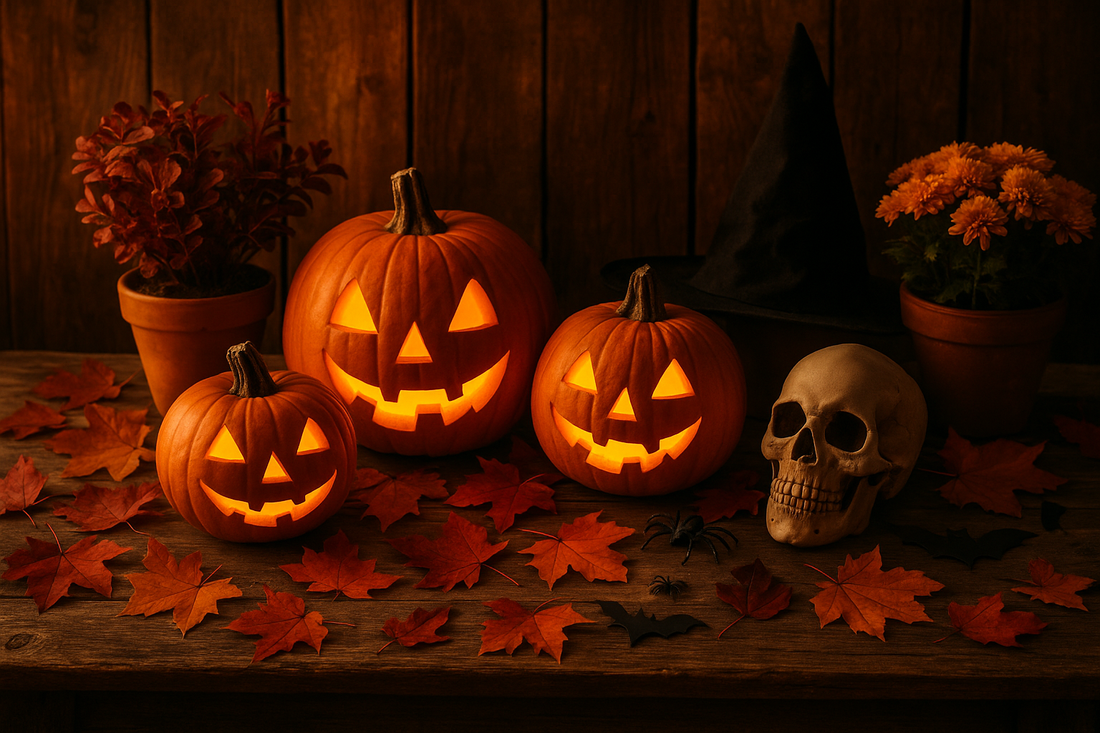
The Origins of Halloween: From Ancient Rituals to Modern Traditions
Share
Halloween didn’t just pop up as a night for candy and costumes. Its roots stretch back thousands of years, blending pagan rituals, Christian observances, and folk customs into the spooky celebration we know today. To understand the true origins of Halloween, we need to look at Celtic harvest festivals, medieval church practices, and even immigrant traditions that shaped the holiday in America.
The Celtic Festival of Samhain: Where It All Began
The story of Halloween starts with the ancient Celts, who lived across Ireland, Britain, and northern France more than 2,000 years ago. For them, the year was divided into two halves: the light part of the year and the dark. Samhain (pronounced “sow-in”) marked the end of harvest and the beginning of winter, falling around October 31.
Samhain wasn’t just about farming cycles—it carried deep spiritual meaning. The Celts believed that on this night, the boundary between the world of the living and the dead grew thin. Spirits could cross over, bringing both blessings and trouble. Families would light massive bonfires, wear disguises to confuse wandering ghosts, and leave offerings of food outside their homes. These traditions already sound a lot like today’s Halloween.
Bonfires, Disguises, and the Supernatural
Bonfires were central to Samhain. The flames were thought to ward off evil spirits and protect communities during the harsh months ahead. People often wore animal skins or masks to disguise themselves—an early version of Halloween costumes.
It wasn’t all fear and gloom. Many Celts welcomed the return of their ancestors’ spirits, hoping for guidance or protection. But at the same time, they feared harmful beings—fairies, restless ghosts, or darker forces. This mix of reverence and dread set the tone for the supernatural atmosphere that still defines Halloween.
![]()
Rome Joins the Party
By the first century CE, the Roman Empire had conquered Celtic lands. Roman festivals soon mingled with Samhain. Two in particular left a mark:
- Feralia – a late-October day when Romans honored the dead.
- Pomona – a festival for the goddess of fruit and trees, often symbolized by apples.
That last one may explain why bobbing for apples became a Halloween tradition centuries later.
The Christian Church Rebrands Samhain
When Christianity spread through Europe, the Church faced a problem: how to deal with stubborn pagan traditions. The solution? Rebrand them. In the 8th century, Pope Gregory III established All Saints’ Day on November 1, a time to honor Christian saints and martyrs. The evening before—October 31—became known as All Hallows’ Eve. Over time, the name shortened to Halloween.
This didn’t erase older customs. Instead, Christian and pagan practices blended. People still lit bonfires, dressed in costumes, and honored the dead, but now under a Christian framework. It was cultural recycling at its finest.
The Middle Ages: Prayers, Mischief, and Soul Cakes
During the medieval period, Halloween became tied to All Souls’ Day on November 2, when Christians prayed for departed souls. One practice called souling involved poor people going door-to-door asking for food in exchange for prayers. They were often given “soul cakes”—small round breads marked with a cross.
Sound familiar? Souling is a clear ancestor of trick-or-treating. Over time, the religious prayers dropped away, but the door-to-door tradition stuck. Children also began dressing up as ghosts or demons to act out the spirits of the dead.
Meanwhile, mischief thrived. Halloween became a night of pranks—moving gates, scaring neighbors, or pulling small-scale vandalism. It was playful, but sometimes destructive, a trait that carried into later centuries.
Crossing the Atlantic: Halloween Comes to America
Halloween traditions traveled to North America with Irish and Scottish immigrants in the 19th century. The Irish potato famine in the 1840s brought a massive wave of immigration, carrying Halloween customs along.
In America, Halloween evolved quickly. Pumpkins—native to North America—replaced turnips as the carved lantern of choice. These jack-o’-lanterns were inspired by an Irish folktale about “Stingy Jack,” a trickster doomed to wander the earth with only a carved turnip lit by a coal. Pumpkins, being larger and easier to carve, became the perfect substitute.
By the late 19th century, Halloween in the U.S. was less about spirits and more about community. Parties, games, and festive gatherings replaced much of the old superstition. Still, costumes, ghost stories, and pranks kept the spooky spirit alive.
The Rise of Trick-or-Treating
The modern tradition of trick-or-treating took shape in the early 20th century. Community groups and schools encouraged costumed parades and door-to-door candy collecting as a safe alternative to vandalism. By the 1950s, with the rise of suburban neighborhoods and post-war baby boomers, trick-or-treating exploded into a nationwide ritual.
Candy companies jumped on the opportunity. By the 1970s, Halloween candy sales became big business, and Halloween cemented itself as a children’s holiday centered around costumes and sweets.
Halloween Today: A Blend of Old and New
Today, Halloween is a cultural mashup. It’s one part ancient harvest festival, one part medieval Christian observance, and one part American pop-culture juggernaut. It’s the second-largest commercial holiday in the United States, generating billions each year in candy, costumes, and decorations.
But if you scratch beneath the plastic skeletons and pumpkin spice hype, you’ll see the deeper themes remain. Halloween is still about:
The Origins of Halloween: Why They Still Matter
So why should we care where Halloween came from? Because history explains why this holiday resonates so strongly. It taps into timeless human concerns: fear of death, hope for protection, and the need to celebrate change.
Every carved pumpkin, every costume, every eerie decoration carries echoes of Samhain bonfires, Roman rituals, medieval soul cakes, and immigrant folklore. Halloween may look commercial on the surface, but its roots run deep.
Final Thoughts
The origins of Halloween remind us that traditions evolve, adapt, and survive across centuries. What started as a Celtic fire festival became a Christian observance, then a folk holiday, and finally a pop-culture phenomenon. Yet at its core, Halloween remains a night when the living acknowledge the dead, when darkness is met with light, and when fear is turned into fun.
Next time you see kids in costumes or a glowing jack-o’-lantern on a porch, remember: you’re looking at the latest chapter in a story that began more than two thousand years ago.

